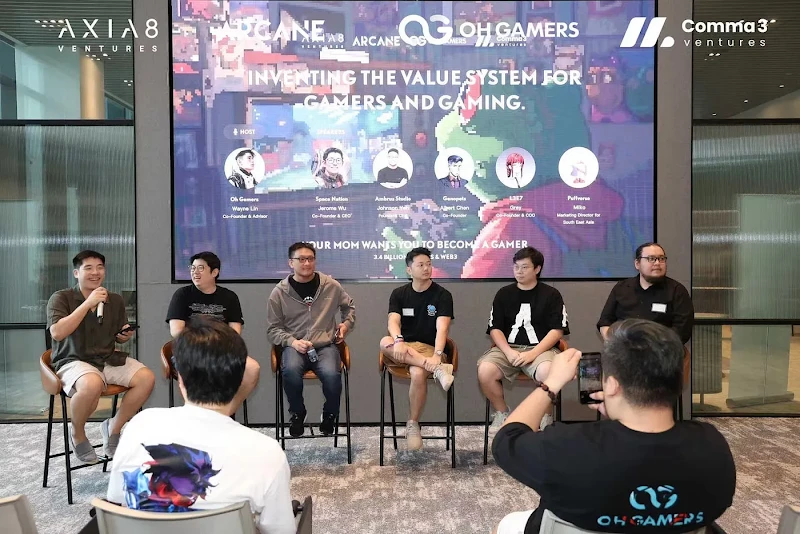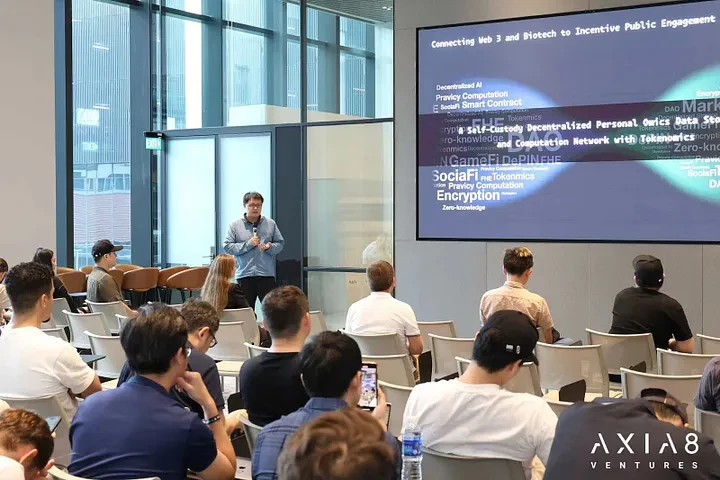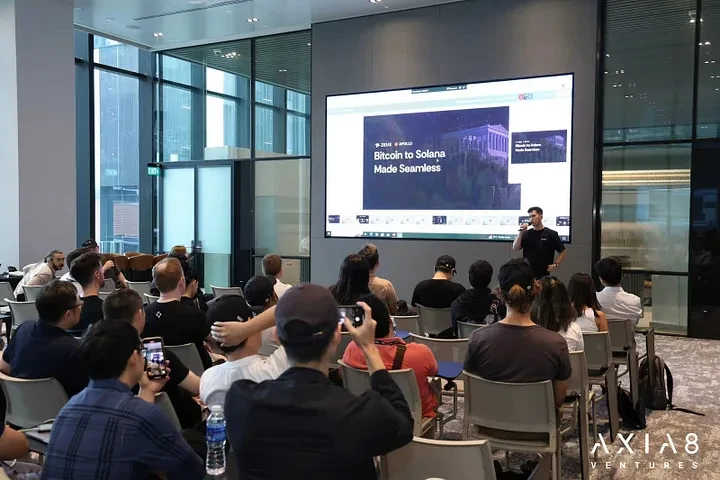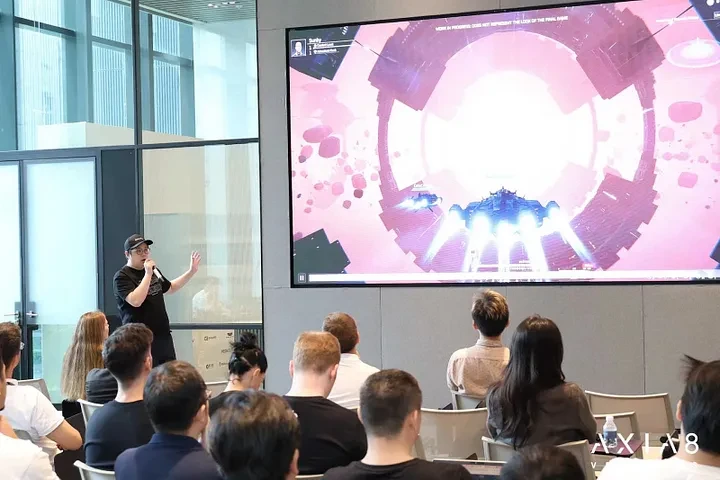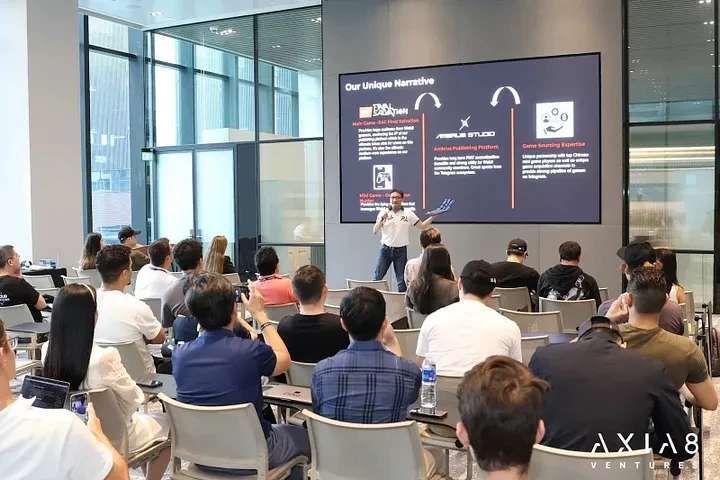एक्सिया8 वेंचर्स इवेंट रिव्यू: वेब3 उद्योग एक महत्वपूर्ण मोड़ पर है
The entire industry is at a critical moment where innovation and uncertainty coexist, and the past successful model is being broken by the pursuit of sustainable growth.
At our recent events, Founders Investors Talk and Your Mom Wants You To Become A Gamer, invited industry leaders gathered together to share their insights on new challenges in the industry.
Explore the infinite possibilities of new areas: healthy living x cryptocurrency
The integration of health and cryptocurrencies has become one of the hot topics in this event, and the Dont Die Summit hosted by Bryan Johnson is the starting point and driving force of this trend. Although the combination of these two fields is still in its early stages, DeScis concept has sparked more and more discussions, accompanied by a wave of speculation in the crypto industry. Although the Dont Die event app is just a simple exercise check-in tool with a scoring system, it has led many crypto enthusiasts to speculate that there may be tokens or airdrops in the future.
Walker Chen, founder of dLife, which focuses on human longevity infrastructure, predicts that more decentralized technologies will be applied to non-financial fields in the future, such as biotechnology and medical and health services. He said: On the one hand, these projects will expand the application scenarios of Web3, and on the other hand, they will attract more professionals from various industries to join the blockchain industry. This influx of talent will promote changes and innovations in the Web3 community itself.
Founders are confused: How to deal with stagnant investment
A common problem faced by founders and VCs is how to move forward when their investment projects are stagnant. Many are confused about what to build next, so more and more attention is focused on platforms like Ton and Telegram applets, but many also believe that these platforms are quickly becoming saturated. In particular, Ethereum has performed mediocrely in the ecosystem due to the lack of the innovative spark that once drove the industry forward.
Interestingly, Solana’s founders remain positive and committed to driving the development of their ecosystem through innovative use cases and consumer-facing applications. Solana is particularly unique in that most projects rely on large-scale financing and community enthusiasm but have yet to see substantial progress. Currently, the trend of building for future ecosystem development has formed, resulting in industry giants attracting founders with promises, but when they actually deliver, dApps fail to show exciting products or clear application directions.
Web3 is at a critical moment where founders need to re-examine the underlying concepts and build products that can truly provide value to paying users, rather than just catering to speculators.
Today, users’ patience has been exhausted, and they need more tangible value. Founders must have a clear long-term vision and really consider what business they are serving. Users’ attention and trust are fleeting, and if founders just blindly follow the trend, they will eventually lose their direction and become at a loss.
Justin Wang, founder of Zeus Network, firmly believes that users want to be able to bring the value of Bitcoin into Solana without any permission. As a developer who has been working in the Solana ecosystem for more than three years, he boldly predicts: We will witness the rise of Bitcoin-derived tokens, and there may be more than a dozen new tokens in the future. But only those transparent Bitcoin tokens that are 1:1 anchored on the chain can attract long-term holders and those dormant user wallets, while those tokens that are mainly used for brand packaging will gradually lose their appeal.
Ryan Chow, co-founder of Solv Protocol, said: “Bitcoin staking will become an explosive track in this cycle, creating more than $100 billion in Bitcoin profit opportunities. As a leader in the field of Bitcoin staking, SolvBTC will provide users with a variety of staking combinations.”
The Confusion of Building for Binance
Another topic worth noting is that the industry tends to build more for Binance rather than with users at the core. Projects like Catizen reflect this phenomenon. Although it is a successful gamification and incentive marketing tool, it is favored by centralized exchanges more because it brings a large number of user registrations. This has led more and more developers to take this path instead of focusing on innovation and driving industry progress. Although this approach has its value, it has also disappointed, confused and even frustrated many founders. Therefore, the industry is in urgent need of a fundamental change.
The popularity of meme coins and high FDV projects shows that the market is more focused on quick profits rather than substantial technological breakthroughs. Although meme coins are indeed innovative in attracting attention, this PVP model inevitably raises questions about its sustainability and has a negative impact on real technological innovation, so we must find a balance.
Tom Tirman, CEO of Reactive Network, predicted: “There will be no more crypto cycles of this magnitude in the future, and the next cycle will see the crypto market become more closely associated with high-risk assets than ever before as individuals and businesses adopt it more widely.”
The conflict between consumers and income
In this environment, consumers and revenue have become hot words. However, these concepts are in conflict with the idea of building for Binance. Founders are questioning whether VCs are willing to invest in projects that focus on real-world applications rather than being attracted by the 100x token narrative. In addition, the current user experience and market conditions also make people doubt whether real users will actually accept or convert.
Space Nation CEO Jerome Wu is determined to prove that Web3 games with strong economic systems will emerge in the bear market. He pointed out: I think everyone is optimistic about the virtual economy in games and believes that they can survive independently without VC and investor funds.
Johnson Yeh, CEO of Ambrus Studio, is also confident about the future development of the gaming industry: In five years, there will be no more concepts like Web3 games or GameFi. By then, games are just games. Some games will incorporate blockchain or Web3 elements, and others will not. But in the end, they are all games that people play for entertainment.
Leaders in the Web3 gaming space are breathing new life into the industry by focusing on building real games designed to attract real players, not just users who come for rewards. By building true gaming economies, games like Space Nation and Ambrus Studio’s E 4 C: Final Salvation are building on core principles to attract true gaming enthusiasts to this new space.
In addition, the demand for platforms like Oh Gamers is growing rapidly, and it has successfully brought more than 20,000 non-crypto gamers into the world of Web3 games. These games are not only entertaining, but also provide players with opportunities to make money, while making playing games to kill time more meaningful through community co-creation.
Important conclusion from Wayne Lin, founder of Axia 8 Ventures
There is no doubt that we are at a critical moment of change. The crypto industry continues to innovate in digital asset issuance and trading, gradually realizing open finance. Although we have achieved amazing returns in DeFi Summer and witnessed sky-high valuations of smart contracts, these phenomena also reveal unsustainable development models in the early industry.
Although these opportunities have attracted a large number of retail investors, investors and founders, they have also led to a loss of motivation, passion and direction. In the past narrative cycle, veteran players used their assets to build new projects, and exchanges focused more on traffic rather than technology. This model is gradually consuming the trust foundation of the industry.
The root of these problems lies in the distortion of incentives, which leads to a lack of trust. The only ultimate beneficiaries are exchanges and institutional traders, because they control the casino and consume the liquidity of participants.
How did we go from building a “trustless” world to today’s crisis of trust?
I am not blaming anyone. The power of the crypto industry comes from the cohesion of the community. Therefore, we should work together to find solutions. We should not blindly blame exchanges for listing VC tokens with high FDV or too many meme coins, nor should we blame project owners for abusing the points and airdrop mechanism.
The point is not to find the culprit, because every snowflake plays a part in causing the avalanche. Our real goal is to find the best way out of the situation together.
This article is sourced from the internet: Axia8 Ventures Event Review: The Web3 Industry is at a Turning Point
संबंधित: येल विश्वविद्यालय के नए पेपर में प्रस्तावित सर्वरफाई अवधारणा के बारे में आप क्या सोचते हैं?
मूल लेखक: हाओटियन येल विश्वविद्यालय के नए पेपर में प्रस्तावित सर्वरफाई अवधारणा के बारे में आप क्या सोचते हैं? क्या यह वेब3 में नवाचार की कमी के लिए एक नया मोड़ बन जाएगा? इस पेपर को व्यवस्थित रूप से पढ़ने के बाद, मैंने कुछ मुख्य बिंदुओं को निकाला है और चर्चा के लिए कुछ विचार जोड़े हैं: 1) पारंपरिक गेमफाई सभी प्ले टू अर्न अवधारणा को बढ़ावा देते हैं और आमतौर पर संतुलन बनाए रखने के लिए दो आंतरिक और बाहरी अर्थव्यवस्थाओं का उपयोग करते हैं (दोहरी मुद्रा मॉडल): आंतरिक मुद्रा एक खपत का निर्माण करती है और एक कमी प्रणाली बनाती है, मौजूदा उपयोगकर्ताओं को मूल्य-वर्धित इक्विटी के माध्यम से इक्विटी टोकन का उपभोग करने के लिए प्रेरित करती है, और संभावित बाहरी बिक्री दबाव को कम करती है; बाहरी मुद्रा लगातार बाहरी उपयोगकर्ताओं और फंडों को पेश करके मुद्रा की कीमत वृद्धि को बढ़ाती है, जिससे बाहरी टोकन की वृद्धि को बढ़ावा मिलता है और गतिविधि बढ़ती है…
